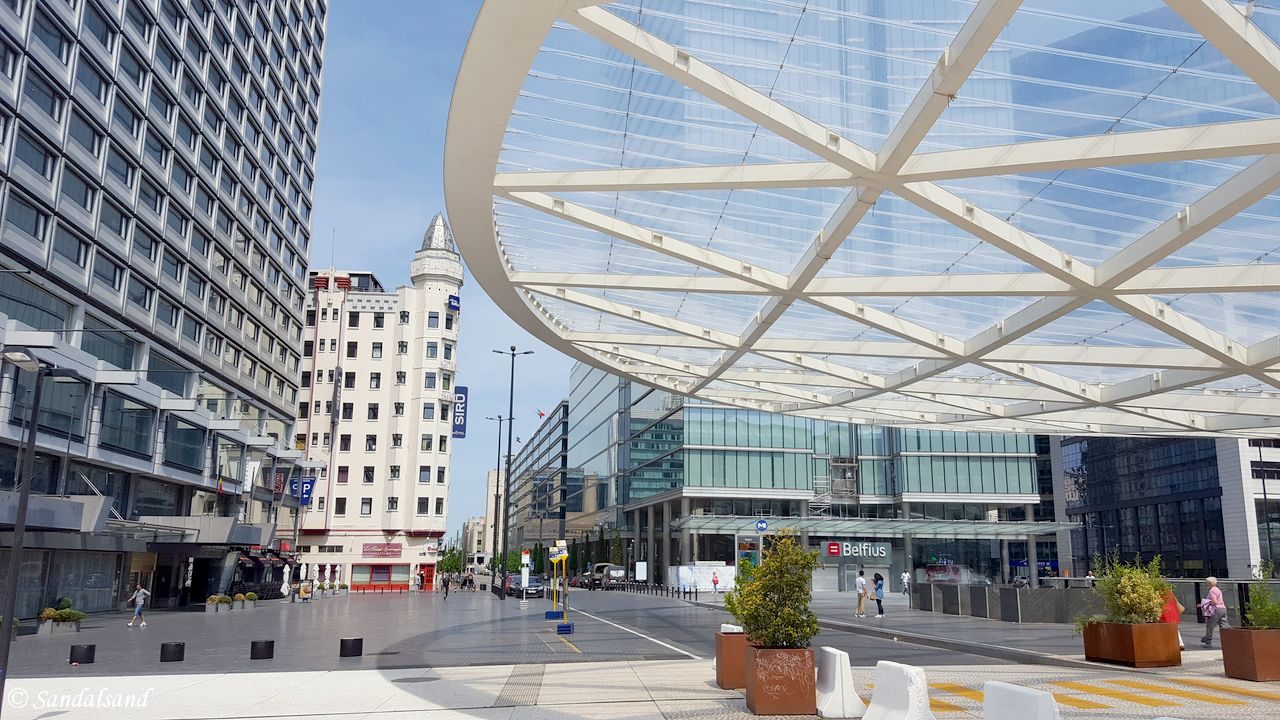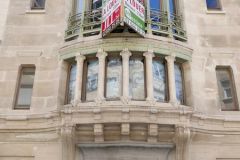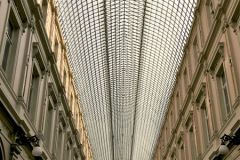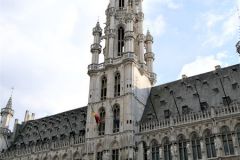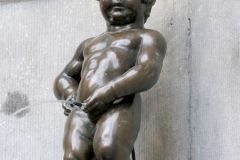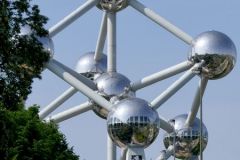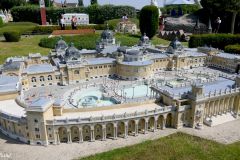Do not get upset about only spending 24 hrs to find sights in Brussels. With a little bit of planning you will be able to discover a lot, and even get more ideas for your next visit. There is more to the capital of Europe than EU office buildings and the Grand Place.
World Heritage Sites in Brussels
About them
The criteria for being an odd sight are somewhat unclear to be frank. That is why I will be starting with this category and spend the remainder of the article offering suggestions which are more obvious – the ones you will want to experience on your first or even second visit to the Belgian capital.
There are two sights of great value for the architect buffs among us that are a bit outside the central squares of Brussels, but still quite easy to reach. They pay homage to two distinct architects from the early 20th century. The first, the Stoclet House (by Josef Hoffmann) is a palace, while the second inscription on the prestigious UNESCO list consists of four town houses. The problem with both is that it is very hard to get inside any of the buildings for a deeper look. Click the links and read my special articles from these World Heritage Sites.
The sites
World Heritage #1298 – Stoclet House: In 1911 a luxurious home to a wealthy banker and art collector was finished, sparing no costs in its richly decorated exterior and interior. The Art Nouveau hinted of what was yet to materialise in the newer styles of Art Deco and the Modern Movement.
World Heritage #1005 – Major Town Houses of the Architect Victor Horta (Brussels): It is such a pity with heritage sites that you can’t actually visit and discover the true reason why they are on the list. Horta’s four houses in Brussels are of this kind. One of them is a museum though, but it was closed on my visit.
The third sight, or site, is right in the centre of things in Brussels. In fact, it is the centre. And so think each and every tourist in Brussels. Read a little about it in this article:
World Heritage #0857 – La Grand-Place, Brussels: I can’t really think of many squares on the Heritage List, and this one is indeed quite extraordinary.
Sights in Brussels within walking distance of the centre
There is a map at the bottom of this article illustrating a number of points of interest in Brussels, most of them reachable on foot in the city centre. There is no point in quoting them here. Let me just mention that a visit to Brussels is not complete without a walk through the glass-roofed shopping mall called Les Galeries Royales Saint-Hubert and then the extremely crowded Rue des Bouchers with a huge number of restaurants.
Off the latter you will be able to locate the Jeanneke-Pis, the lesser known “sister” of the much more famous Manneken Pis further down the road. And then there’s the Grand Place (Grote Markt) with the magnificent city hall and some other extremely extravagant facades lining the square.
From the series of pictures below, you will notice that I also went elsewhere.
Sights outside the centre
The first two world heritage sites are south of the city centre. I would also like to mention two sights in the northern end of Brussels, Atomium and Mini-Europe. Both are great for all ages.
Atomium
Atomium consists of nine (18 m diameter) connected spheres forming the shape of a unit cell of an iron crystal, 165 billion times the original. 3 m tubes connect the spheres. It is possible to get inside, take a vertical elevator or slanting escalators or stairs, and reach the top sphere at an altitude of 102 metres. Inside the top sphere there is a restaurant as well as a panorama of Brussels.
The construction was erected for the 1958 World Exhibition, was meant to be destroyed but became so popular that it has survived to this day. It remains an iconic symbol of Brussels and a popular destination on a visit to the city. It still looks futuristic and it is kind of fascinating how the peaceful use of atomic energy was seen as so promising that they made it the centre piece of the exhibition. Prepare for long lines at the ticket counter.
Mini-Europe
Mini-Europe is completely different. A couple of hundred metres uphill this little park-like oasis invites you in to a Europe in miniature. Famous buildings, monuments and city centres from across the European Union are shown at a scale of 1:25. In an hour or two one gets to know about 350 familiar and unfamiliar places around Europe. Running water, moving ships and windmills add to the quite spectacular park.
Getting there
The two are reached by the hop-on hop-off bus service called CitySightseeing. This company offers two lines, and Atomium is at one end of the blue line. The other end is near the Grand Place. (The Horta Museum mentioned as a World Heritage Site above is by the way on the red line.) There are several cheaper public transportation options available, including the metro (line 6) and a tram service (line 7) which I took in one direction. Read more on the websites.
Sleep
There are many places to stay in Brussels, but I spent the night on my latest visit in the decadent Hôtel Métropole. It opened in 1895 in the building of a former bank whose desk now functions as the reception desk. The lavishly decorated reception, lobby and lounge go well together with wonderful rooms and suites. It is such a wonderful place to stay, with a great location.
If you don’t stay I would suggest that you have a coffee or drink in the Café Metropole at the very least. Go back in time, to the oldest hotel in Brussels still in operation. You will not be the first celebrity to enter through these doors.
Book it or check out the alternatives.
The map
This is the map I made before travelling to Brussels, edited while I was there and finished after returning home. I went to many but not all of these places during my 26 hours in Brussels. Click, zoom and use it as you like.
This one-night visit to Brussels was combined with three nights in Bruges. Read all articles from Belgium including one with even more photographs to inspire you.

